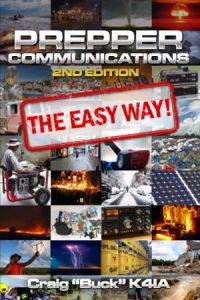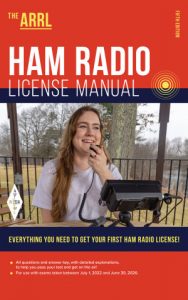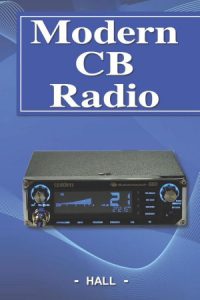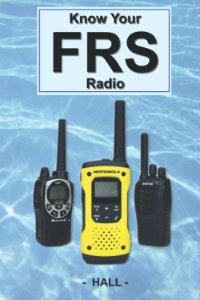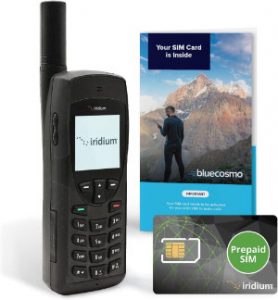For many survivalists and preppers, communication is treated almost as an afterthought. They grab a cheap Baofeng and throw it in their backpack. How hard can a radio be to use?
This guide will delve into the importance of radio communication in emergency and survival scenarios, the various types of radio communication devices, and how to learn effective use of them.

Why Radio Communication is Vital for Survival
In the event of a major disaster or societal breakdown, traditional forms of communication such as mobile phones and the internet may no longer function. This is where radio communication becomes invaluable.
Radios provide a lifeline in a crisis, enabling you to receive important updates and send messages, and request emergency assistance even when other communication channels are down. Radios do not rely on cell towers or the internet, making them a robust and reliable form of communication in a crisis.
Just in my area, there have been two situations where standard communications were down and amateur radio operators were called in to assist police, fire, ambulance, and other emergency agencies. That’s right, the towers and radios that the government and emergency services used were down, specifically underwater.
Types of Radios for Survivalists and Preppers
There are several different types of radios that survivalists and preppers can use. Each has its advantages and disadvantages, and the best one for you will depend on your specific needs and circumstances.
1. Ham Radios
What is Ham Radio?
Ham radio, or amateur radio, is a system of radio communication that allows licensed operators to communicate with each other across cities, states, and even continents. Unlike commercial radio services, ham radio enthusiasts have the freedom to experiment with various frequencies, equipment, and modes. This unique form of communication relies on the principle of self-sufficiency, making it a vital tool for survivalists and preppers.
The Importance of Ham Radio in Emergency Situations
When disaster strikes and traditional communication infrastructures fail, ham radio operators become the backbone of emergency communication. These radio enthusiasts work tirelessly to ensure that vital information is relayed to first responders, government agencies, and affected communities. From natural disasters to power outages, ham radio offers a lifeline of communication that can save lives and provide much-needed assistance.
The devastating earthquake in Mexico in 1985 was a prime example of how amateur radio operators are the first to jump into action when communications to a huge area just disappears.
License Types in the United States
In the United States, the Federal Communications Commission (FCC) oversees the licensing and regulation of ham radio operators. There are three main license types available:
- Technician Class: This entry-level license grants operators the ability to communicate on a wide range of frequencies using specific modes. Technicians can communicate within their local area and may also use certain satellite communication systems.
- General Class: The General Class license provides expanded privileges, allowing operators to communicate across the United States and even internationally. General Class license holders have access to a broader spectrum of frequencies and modes.
- Extra Class: The Extra Class license is the highest level of licensing in the United States. Operators with an Extra Class license have the widest range of privileges, including access to all amateur bands and modes. This license allows for global communication with fellow ham radio operators.
As survivalists and preppers, it is essential to recognize the immense value of ham radio in preparing for and responding to emergencies. The ability to communicate independently and effectively during times of crisis can make the difference between life and death. By obtaining the appropriate license and investing in the necessary equipment, survivalists and preppers can harness the power of ham radio to stay connected when other forms of communication fail.
In a world increasingly reliant on technology, ham radio stands as a testament to the enduring power of human ingenuity. By understanding what ham radio is, its importance in emergencies, and the different license types available in the United States, survivalists and preppers can integrate this invaluable tool into their preparedness plans, ensuring they are equipped to handle any situation that comes their way.
2. CB Radios
CB radio, which stands for Citizens Band radio, is a short-distance radio communication system that operates on specific channels within the 27 MHz frequency range. It was originally developed for private citizens to communicate with one another, hence the name “Citizens Band.” CB radio gained popularity in the 1970s when the Federal Communications Commission (FCC) allocated a specific frequency band for its use.
The history of CB radio is rooted in the need for individuals to have a means of communication for personal and business purposes. During the 1970s, CB radios became widely used by truckers and travelers who needed a way to communicate with each other while on the road. This led to the development of a unique CB radio subculture, complete with its own lingo and etiquette.
Today, CB radio continues to be used by a wide range of individuals, including survivalists and preppers. In emergency situations where traditional communication methods may fail or become unavailable, CB radio provides a reliable means of communication over short distances. It can be a lifeline for survivalists and preppers who want to stay connected with their group or community during a crisis.
One of the key advantages of CB radio for these uses is the fact that it does not require a license to operate. Unlike other radio communication systems such as ham radio, which require operators to obtain a license from the FCC, CB radio can be used freely by anyone. This makes it accessible to individuals who may not have the time or resources to go through the licensing process.
The lack of licensing requirements also means that CB radio is relatively easy to set up and use. All you need is a CB radio transceiver, an antenna, and a power source. Once you have these basic components, you can tune into the designated CB radio channels and start communicating with other users in your area.
CB radio can be an invaluable tool for survivalists and preppers in a variety of situations. During natural disasters, such as hurricanes or earthquakes, when cell phone towers may be down or overloaded, CB radio can provide a vital means of communication. It allows individuals to relay important information, coordinate rescue efforts, and stay informed about the situation at hand.
In addition to emergency situations, CB radio also has a range of practical uses for survivalists and preppers in everyday life. It can be used for communication between vehicles in a convoy, monitoring road conditions during a bug-out scenario, or coordinating activities within a prepper group. Furthermore, CB radio can serve as a valuable source of information, as users often share updates and local news over the airwaves.
It’s important to note that while CB radio does not require a license, there are still rules and regulations that users must adhere to. The FCC sets limits on the power output of CB radios, the types of antennas that can be used, and the content of communications. It’s crucial for survivalists and preppers to familiarize themselves with these regulations and operate their CB radios responsibly.
3. FRS Walkie Talkies
While there are various communication tools available to the survivalist or prepper, one option that stands out for its simplicity and accessibility is the Family Radio Service (FRS) radio.
The FRS radio system was established by the Federal Communications Commission (FCC) in the early 1990s to provide an easy-to-use, license-free communication solution for the general public. It was primarily designed for short-range, personal communication, making it an ideal choice for family outings, outdoor adventures, and emergency situations.
FRS radios are widely used due to their numerous benefits. Firstly, FRS radios provide reliable communication over short distances, typically up to two miles, depending on terrain and other factors. This makes them suitable for establishing contact within a localized area during emergencies or when other communication systems fail.
Secondly, FRS radios are compact, lightweight, and easy to carry, making them perfect for on-the-go communication during outdoor activities or when bugging out. They often come with features like weather alerts, built-in flashlights, and rechargeable batteries, further enhancing their usefulness in survival situations.
Additionally, FRS radios offer multiple channels to choose from, allowing users to find a clear frequency for communication. This feature is particularly beneficial in densely populated areas where interference can be an issue.
One of the most significant advantages of FRS radios is that they do not require a license to operate [1]. Unlike other radio systems like Ham radio, which necessitates obtaining an FCC license, FRS radios can be used right out of the box by anyone. This accessibility makes FRS radios a popular choice among survivalists and preppers who may not have the time or resources to obtain a license.
While the lack of licensing requirements is convenient, it is important to note that FRS radios still need to adhere to FCC regulations. These regulations include power limitations, restrictions on the use of certain frequencies, and guidelines on channel sharing to avoid interference with other users.
Lastly, FRS radios are among the least expensive ways to communicate off-grid.
4. Satellite Phones
While technically not a radio, satellite phones have their place too. If you are looking for a way for you and your family to communicate in the event of a hurricane, earthquake, or other natural disaster, this might be an easy-to-use solution.
The concept of satellite communication dates back to the mid-20th century when the first telecommunications satellites were launched into space. However, it wasn’t until the late 1990s that satellite phones became commercially available. Early models were bulky and expensive, limiting their accessibility mainly to government and military agencies. Over time, advancements in technology have made satellite phones more compact, affordable, and user-friendly.
Satellite phones operate by establishing a connection with satellites orbiting the Earth instead of terrestrial cell towers and can provide coverage in remote areas where cell towers are unavailable or damaged. These phones have their own dedicated satellites, such as those operated by Iridium, Globalstar, and Inmarsat, which ensure global coverage.
During natural disasters, such as hurricanes, earthquakes, or floods, terrestrial communication infrastructure can be severely damaged or overwhelmed. Satellite phones provide a lifeline for emergency responders, allowing them to coordinate relief efforts, request assistance, and provide updates on the ground.
Whether exploring dense forests, climbing mountains, or sailing across vast oceans, satellite phones enable survivalists and preppers to maintain communication with the outside world. In remote areas where cellular networks are non-existent, satellite phones ensure safety and peace of mind.
For those who choose to live off-grid, satellite phones provide an essential means of communication. Whether residing in a remote cabin, an RV, or a self-sustaining community, satellite phones enable residents to stay connected, request emergency assistance, and receive important updates.
For preppers and survivalists who frequently travel to foreign countries or remote regions, having a satellite phone is invaluable. It ensures they can communicate and seek assistance regardless of their location, bypassing the limitations of local cellular networks.
Satellite phones often come equipped with emergency features, such as GPS tracking and SOS buttons. These features enable users to send distress signals and share their precise location, facilitating swift rescue operations.
Unlike radio communications, satellite phones still rely on basic infrastructure to work. If the companies or countries that operate the service are no longer in operation, then the phone will not be either.
Key Features to Consider When Choosing a Radio
When choosing a radio for survivalist and prepping purposes, there are several key features to consider:
1. Intended Use
The primary intended use of the radio will dictate a lot of your choices. Will you be primarily communicating with other people in a group who can all purchase similar radios? Are you attempting to make contact with emergency services in the event you need rescue? There is no one radio to rule them all.
2. Battery Life
In a survival situation, you may not have access to electricity to recharge your devices, so a radio with long battery life and multiple ways to charge or power the device is essential. Solar chargers and AA battery packs are excellent accessories.
3. Multiple Power Sources
Look for a radio that can be powered in multiple ways – for example, via batteries, solar power, or hand-crank. Make sure you have a wide array of adapters as well as the ability to make your own adapters when necessary.
4. Durability
Your radio needs to be able to withstand harsh conditions, so look for a model that is rugged and durable. Waterproof or at least water-resistant models are preferred. Look for the IPX certification to find out exactly how much a radio can withstand.
5. Versatility
A radio that can access a wide range of frequencies and bands is preferable, as it will provide you with more options for communication. Many radios can receive signals from a much wider range than they can transmit such as receiving weather alerts and standard FM radio. Some radios also include lights, strobes, whistles, and sirens so that may also be something to look into.
Essential Radio Communication Skills for Survivalists
To use a radio effectively in a survival situation, you need to develop certain skills:
Knowing the correct etiquette for using a radio is important. This includes knowing how to take turns speaking, using the correct language and terms, and understanding how to communicate clearly and effectively. This may sound not sound important but it absolutely is. When you are in an emergency situation when every second counts, this is extremely important.
Think about learning morse code as it can be a useful tool for communicating over the radio in situations where voice communication is not possible or safe. Often, morse code can get through when voice just can’t.
Different radio services operate on different frequencies, and you need to know which ones to use in different situations. Knowing where on the dial to find someone who can help is just as important as having a radio to begin with.
Learn about leads, antennas, ground planes, etc. Knowing that a six-foot antenna will work better than a seven-foot antenna at 146.500MHz might make the difference between being heard and not.
Knowledge is far more important than the equipment. An experienced Amateur Extra class Amateur Radio operator can literally make a radio from spare parts and communicate with people halfway around the world whereas someone who just bought a Baofeng off of eBay and threw it in their backpack is more likely to drain the battery before ever communicating with anyone.
The more you use your radio, the more proficient you will become. Regular practice will help you to become comfortable with operating the device and using it to communicate effectively. Experiment with different settings, different times of the day, and different terrains to see how each change affects range and signal quality.
Conclusion
Radio communication is a crucial skill for survivalists and preppers. By choosing the right type of radio and developing the necessary skills, you can ensure that you will be able to communicate effectively in any crisis situation.
Whether you opt for a ham radio, a CB radio, FRS handhelds, a satellite phone, or some other technology, the important thing is to choose a device that meets your specific needs and practice using it regularly. This will ensure that you are prepared for any situation, and able to communicate effectively when it matters most.


